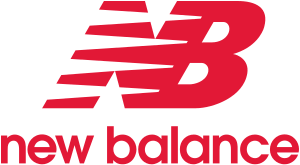05/08/2020
Many of us have changed our workout routines due to the temporary closure of gyms and fitness centers. The warmer temperatures and the sunny skies have called us outside to pound the pavement. Whether this means a walk around the neighborhood with the family dog, jogging for the first time, or trying to maintain conditioning since your race was cancelled or postponed; a good pair of shoes can help make this more enjoyable and prevent aches and pains.
How Can I Tell if I Need a New Pair of Shoes?
Although you may have a favorite old pair of shoes, this may not be the shoe to wear when starting or increasing your workout routine. The lifespan of a shoe is between 300-400 miles. Don’t worry if you don’t track the specific mileage on the shoe, there are several other telltale signs that indicate it may be time to invest in a new pair! Look at the shoe and evaluate for overall wear and tear. Are there areas on the sole of the shoe where the tread has worn down? Is their breakdown in the top of the shoe – holes in the shoe, wear around the heel? Finally, and the easiest yet, evaluate how the shoe feels! Do your feet hurt when you wear them? Are you starting to see aches and pains in your knees, hips or back? If the answer to any of these questions is yes, it may be time to invest in a new pair.
What are Tips for Selecting the Right Shoe?
The best tip for choosing the right shoe for your foot and activity is that it should immediately feel comfortable. You should never have to “break in” a new pair of shoes! Our Optimum Stride running therapists always recommend, whether walking or running, to choose a shoe designed for running. There are many brands of running shoes on the market, and they offer a great variety of fit and support. With such a large selection, choosing the right shoe can feel intimidating.
Regardless of the brand, all running shoes fit into categories:
- Cushioned/neutral
- Stability
- Motion control
Cushioned/neutral: this is best for the light weight runner or lower mileage runner and walker. These shoes are lighter and will provide a good amount of shock absorption. If you don’t need a lot of support through your arch to be comfortable or are have trouble with aching in your knees, hips or low back, this might be a good choice!
Stability: this type of shoe is good for the majority of runners and walkers. It will still offer a good amount of cushion and shock absorption but also provides some mild-moderate support through the arch. This shoe may “hold up” better to more pounding and increased miles. If you are questioning what category of shoe to choose, this is a safe bet for most people.
Motion Control: this shoe is best for heavier runners that have trouble with shoes breaking down too quickly or need a large amount of support through the arch to be comfortable. Typically, these shoes have less of a “cushioned” feel and are a heavier, more solid shoe.
How Are Running Shoe Brands Different?
Many shoes will also offer narrow and wide sizes for those that need a specialty size and fit. In general, each shoe brand is known to have the following fit qualities:
offers shoes in narrow and wide widths
narrow fit
wider toe box, narrower heel
wider toe box
Don’t hesitate to try on a variety of brands within the same “category” of shoe (cushioned/stability/motion control) to find the best fit for your foot.
What Size Should I Get?
Finally, it is best to have a dedicated shoe just for exercising. To avoid overcrowding, it is best to purchase a workout shoe that is ½ size bigger than your normal everyday shoe size.






